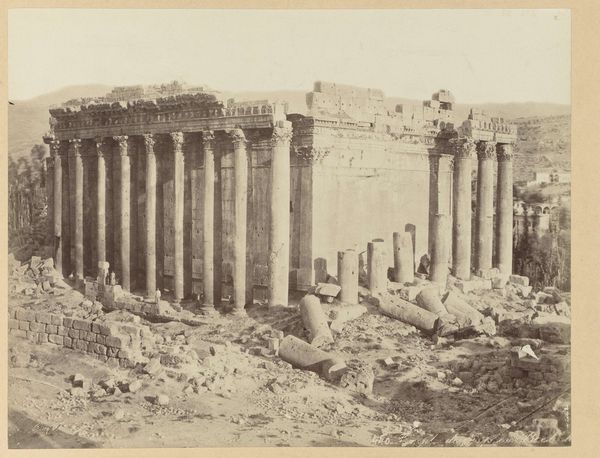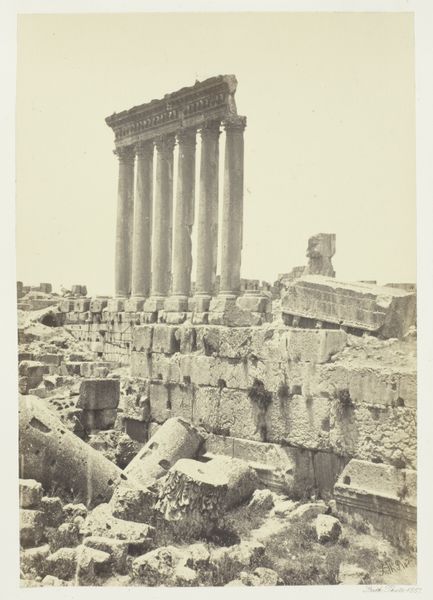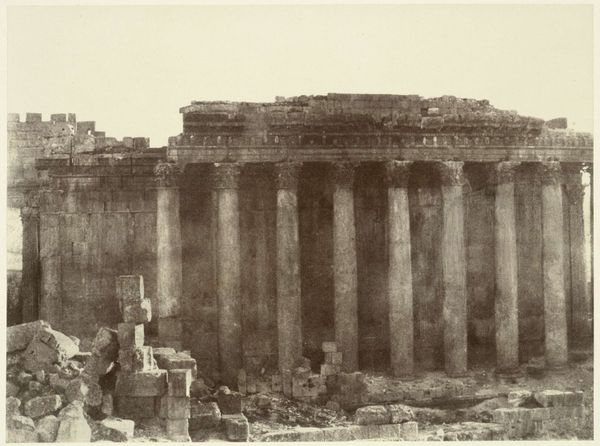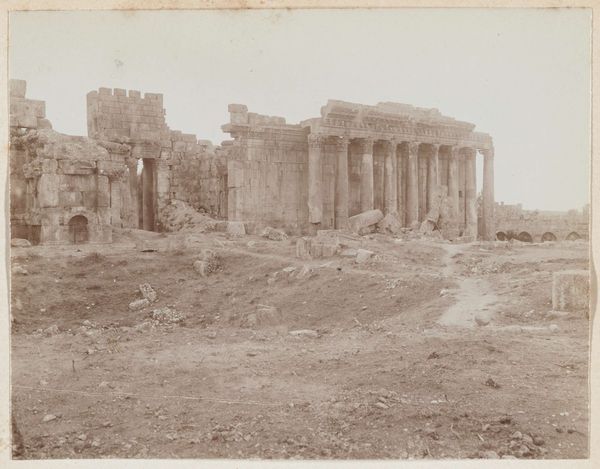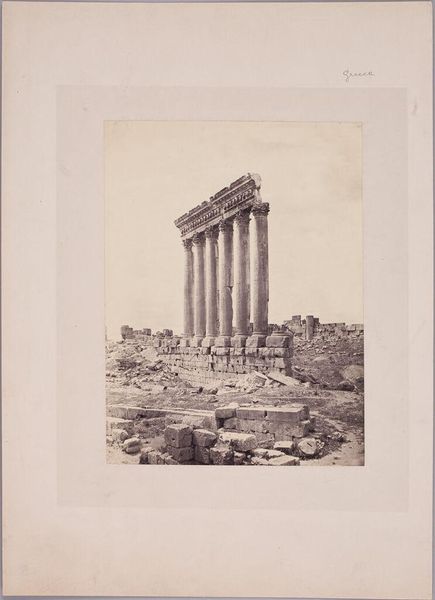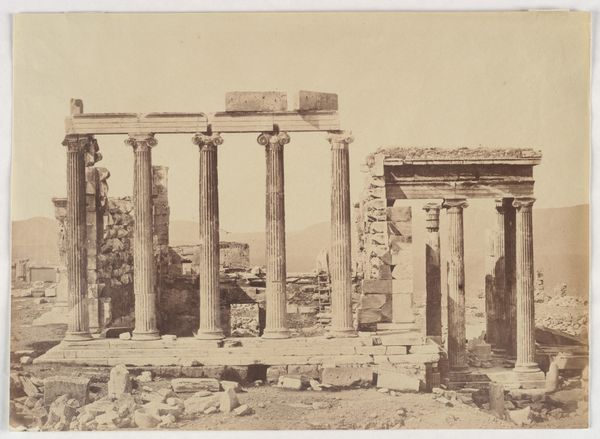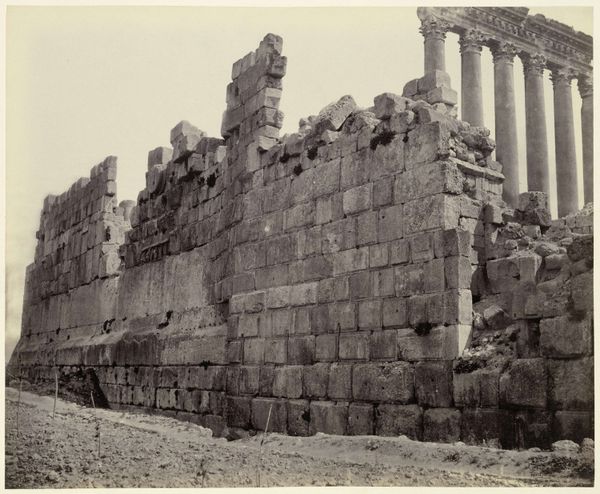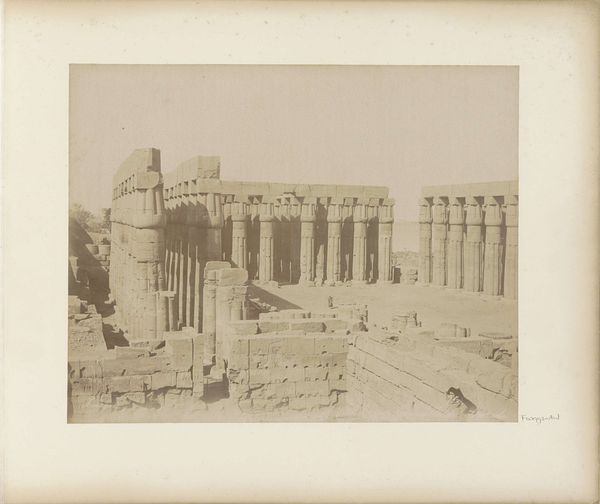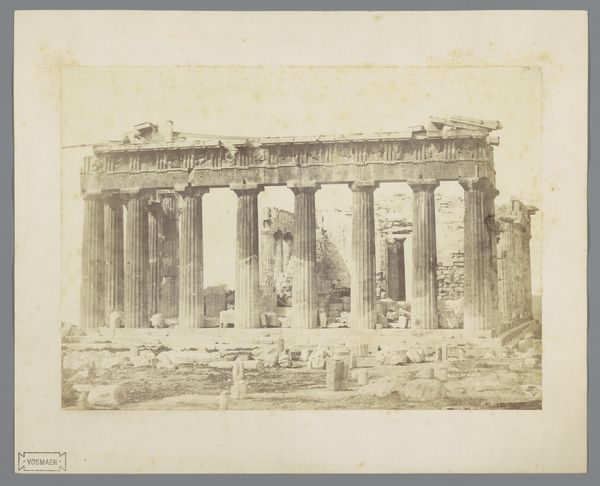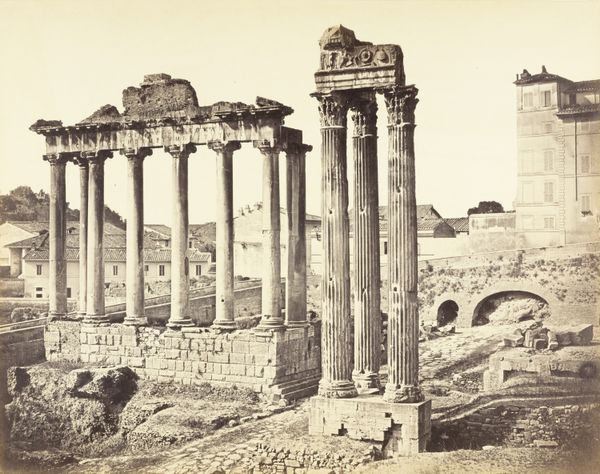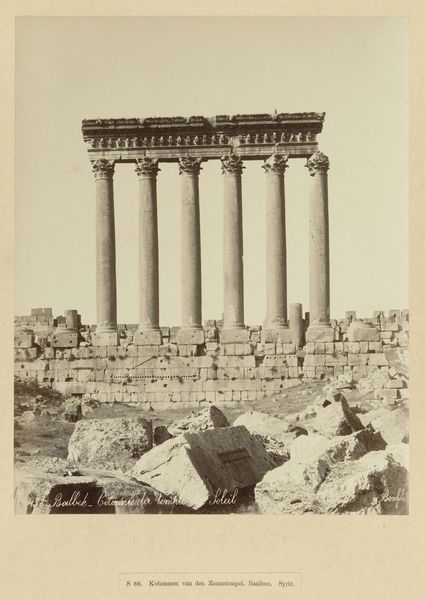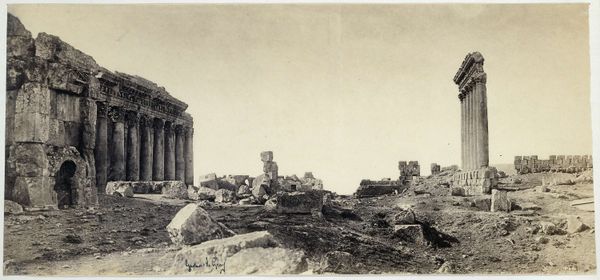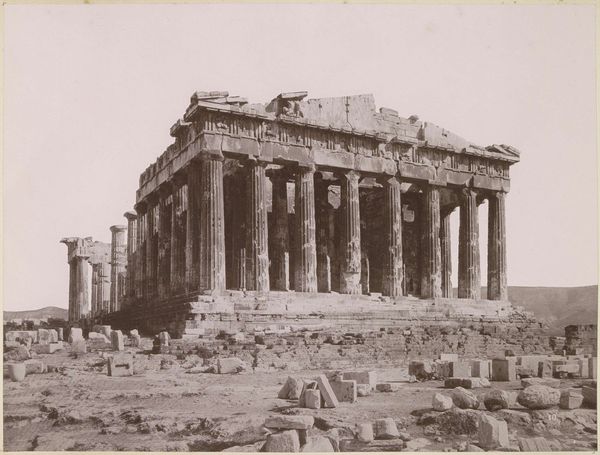
print, photography
# print
#
photography
#
ancient-mediterranean
#
column
#
orientalism
#
cityscape
Dimensions: height 227 mm, width 282 mm
Copyright: Rijks Museum: Open Domain
Curator: A truly arresting image, isn't it? This is a photographic print by Maison Bonfils, taken sometime between 1876 and 1900. It captures the Temple of Bacchus in Baalbek. Editor: It evokes such a palpable sense of grandness mixed with ruin. The towering columns are breathtaking, but the collapsed stones lying around speak volumes about the passage of time and the fragility of even the most imposing structures. Curator: Absolutely. Bonfils operated a prolific studio in Beirut, producing images that were widely circulated in Europe and North America, shaping perceptions of the "Orient." This particular image taps into the Orientalist fascination with antiquity and the allure of the "exotic" Middle East. Editor: It's interesting to think about the choice of subject matter – Bacchus, the god of wine and ecstasy. I wonder what that symbol signified to its intended audience? Perhaps it represented the decadent pleasures and perceived moral laxity attributed to the East. Curator: Precisely. These images often served to reinforce colonial power dynamics. The romanticized depiction of crumbling ruins could be used to justify Western intervention and "civilizing missions." It was as much about projecting power as about accurately documenting the site. Editor: I find myself drawn to the figures in the image; they’re so small in comparison with the gigantic pillars, which perhaps also creates a commentary of sorts on human temporality versus the enduring quality of the ruins. But they also feel placed in such a way as to amplify a connection to place, don't you think? Curator: They are an integral part, certainly. Bonfils wasn't merely interested in the objective documentation. He also used figures for scale but moreover in this photograph they served to highlight the supposed differences between 'us' and 'them.' Their presence is essential for his specific framing and marketing strategies. Editor: Considering the socio-political impact this photography created adds quite a significant and discomforting layer. Now, observing these images makes me reflect on the layered context of these relics, how perception can alter reality so drastically. Curator: Indeed, it is a reminder of the power of images and the responsibility we have in interpreting them critically, and how these images also are a powerful testament of cultural imperialism.
Comments
No comments
Be the first to comment and join the conversation on the ultimate creative platform.
